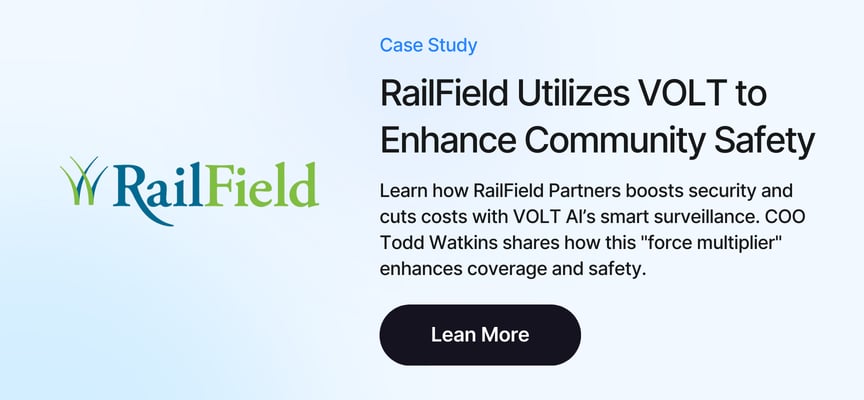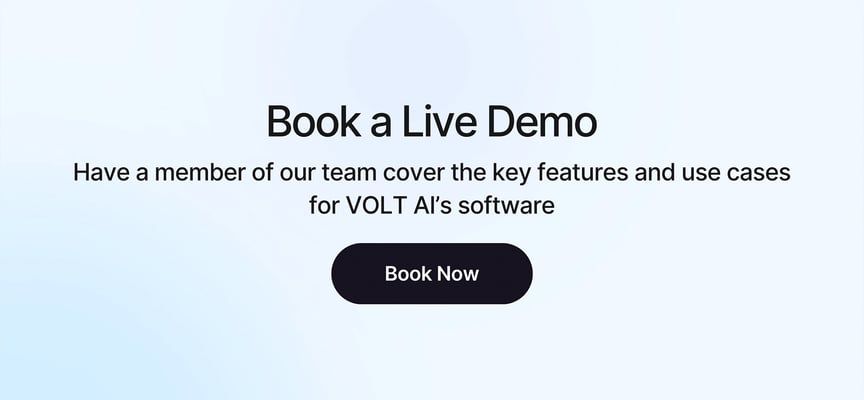When a tech startup's prototype lab was targeted by industrial espionage, their security system didn't just record the intrusion—it prevented it. The moment unauthorized individuals approached the facility, AI-powered detection identified the threat, coordinated an automated lockdown, and alerted security personnel with real-time visual confirmation. The would-be thieves never made it past the perimeter.
Modern enterprises require security solutions that prevent incidents rather than document them after the fact—transforming protection from reactive response to proactive threat prevention.
This proactive response demonstrates the fundamental difference between basic security systems and best-in-class business protection. Modern enterprises require security solutions that prevent incidents rather than document them after the fact.
Read the full guide on AI security cameras
1. Intelligent Threat Detection Beyond Basic Motion Sensors
The best business security systems utilize artificial intelligence to analyze behaviors, patterns, and environmental factors rather than relying on simple motion detection. These systems understand normal business operations and identify anomalies that indicate potential threats.
Advanced detection capabilities include behavioral analysis that recognizes suspicious activities like individuals surveying facilities or coordinating potential break-ins. AI algorithms distinguish between authorized personnel working unusual hours and unauthorized individuals attempting access, dramatically reducing false alarms while improving threat identification accuracy.
Advanced Detection Capabilities:
- Behavioral Analysis: Recognizes suspicious activities like facility surveillance or coordinated break-ins
- Environmental Intelligence: Weather and operational conditions don't trigger false alerts
- Real-Time Assessment: Immediate evaluation determines genuine threats vs. routine activities
- Contextual Understanding: Learns facility-specific patterns and operational schedules
Environmental intelligence ensures weather conditions, building operations, and routine maintenance activities don't trigger unnecessary alerts. The system learns facility-specific patterns including typical employee movements, visitor traffic flows, and operational schedules to provide contextually appropriate responses.
Real-time threat assessment enables immediate evaluation of detected activities, determining whether situations require security intervention or represent normal business operations. This intelligent analysis ensures security resources focus on genuine threats rather than routine activities.
2. Comprehensive Integration Across All Security Components
Leading business security systems integrate access control, video surveillance, alarm systems, and environmental monitoring into unified platforms that coordinate responses automatically. When threats are detected, these integrated systems trigger comprehensive responses across multiple security components simultaneously.
Access control integration enables automatic lockdown procedures that secure threatened areas while maintaining emergency egress routes. Video surveillance automatically focuses on areas where threats are detected, providing real-time visual confirmation for security personnel. Alarm systems coordinate with building management to control lighting, communication, and HVAC systems during security incidents.
The unified management interface allows security personnel to monitor comprehensive facility status from single dashboards rather than managing multiple separate systems. This centralization improves response coordination while reducing operational complexity and training requirements.
Emergency service integration provides direct communication between security systems and law enforcement agencies, sharing real-time facility information, threat locations, and building layouts that improve emergency response effectiveness.
3. Automated Response Capabilities That Act Within Seconds
Speed of response determines the difference between contained incidents and major losses. The best business security systems coordinate automated responses within seconds of threat detection, significantly reducing the time between incident occurrence and effective intervention.
Automated capabilities include access control modifications that secure sensitive areas, lighting adjustments that illuminate escape routes or deter unauthorized activities, and communication system activation that provides real-time updates to security personnel and emergency responders.
Speed of response determines the difference between contained incidents and major losses. Best systems coordinate automated responses within seconds of threat detection
Intelligent escalation protocols ensure appropriate responses to different threat levels. Minor anomalies trigger increased monitoring and internal alerts, while serious threats automatically contact emergency services and implement comprehensive facility protection procedures.
Mobile connectivity ensures security personnel maintain constant awareness regardless of physical location. Real-time alerts, remote system control, and mobile access to video feeds enable immediate response from anywhere, ensuring threats receive attention even when security staff are off-site.
4. Scalable Cloud-Based Architecture for Growing Businesses
Modern businesses require security solutions that accommodate growth, facility changes, and evolving operational requirements without necessitating complete system replacements. The best systems provide cloud-based platforms that support expansion from single locations to multi-site enterprises.
Key scalability advantages:
- Infrastructure Independence: Adding locations through software rather than hardware
- Flexible Licensing: Adjusting capabilities based on current needs and budgets
- Centralized Management: Overseeing multiple facilities from unified interfaces
- Integration Compatibility: Working with existing infrastructure investments
Multi-site management enables centralized oversight while maintaining local control for site-specific needs. This balance supports operational efficiency and customized protection approaches that address diverse facility requirements across growing organizations.
The cloud-based architecture eliminates infrastructure limitations that historically constrained security system growth, ensuring businesses can scale protection capabilities as operations expand without losing existing investments.
5. Comprehensive Analytics and Operational Intelligence
The best business security systems provide detailed analytics that extend beyond basic incident reporting to include operational insights that improve business efficiency while maintaining security effectiveness.
Security analytics identify patterns in threat attempts, facility usage, and operational workflows that inform strategic decision-making. Understanding peak traffic periods, space utilization patterns, and security incident trends enables data-driven improvements to both security protocols and operational efficiency.
Analytics capabilities include:
- Incident Trend Analysis: Understanding threat patterns and vulnerabilities
- Operational Insights: Optimizing facility usage and staff scheduling
- Compliance Reporting: Automated documentation for regulatory requirements
- Performance Metrics: Measuring security effectiveness and system performance
Automated reporting reduces administrative burdens while providing detailed documentation that supports regulatory compliance, insurance claims, and legal requirements. Comprehensive audit trails eliminate manual record-keeping while ensuring accurate incident documentation.
The operational intelligence derived from security data helps businesses optimize resource allocation, improve facility utilization, and make informed decisions about security investments and operational improvements.
ROI Beyond Traditional Security Metrics
The best business security systems provide return on investment that extends far beyond loss prevention. Insurance premium reductions often offset 10-25% of system costs, while operational efficiency improvements reduce overall business expenses through optimized facility management and reduced staffing requirements.
Automated incident response capabilities reduce security personnel requirements while improving response effectiveness. Remote monitoring enables single operators to oversee multiple properties, reducing operational costs while maintaining comprehensive protection.
Insurance premium reductions offset 10-25% of system costs, while operational efficiency improvements reduce overall business expenses through optimized facility management and reduced staffing requirements
The combination of proactive threat prevention, operational intelligence, and automated efficiency creates business value that justifies security investments through multiple benefit categories rather than relying solely on loss prevention metrics.
Choosing Intelligence Over Basic Protection
The best business security systems transform protection from reactive incident documentation to proactive threat prevention. Organizations that invest in intelligent, integrated, and scalable security platforms gain competitive advantages through reduced risks, improved operational efficiency, and enhanced business continuity.
VOLT delivers best-in-class business security: intelligent threat detection that prevents incidents before they occur, comprehensive integration across all security components, automated responses that act within seconds, scalable cloud architecture that grows with your business, and comprehensive analytics that provide operational intelligence beyond traditional security metrics.
Ready to experience the difference that truly intelligent security makes? Contact VOLT to discover how our platform transforms your existing security infrastructure into a comprehensive protection network that supports both security objectives and business growth.



